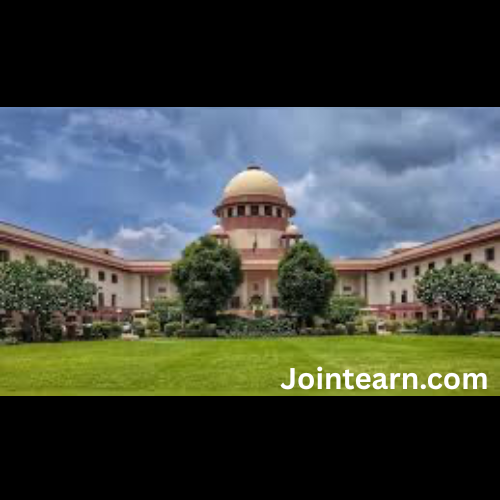The Supreme Court on Monday rejected a petition seeking drastic measures to curb air pollution in Delhi-NCR, including a year-round ban on construction and severe restrictions on vehicular movement. The bench, led by Chief Justice of India Bhushan R Gavai and comprising Justices K Vinod Chandran and NV Anjaria, emphasized that the capital “cannot be brought to a standstill” in the name of fighting air pollution, highlighting the need to balance environmental concerns with economic activity and livelihoods.
The petition, argued by senior advocate Gopal Sankaranarayanan, portrayed Delhi as a “gas chamber” and urged the court to adopt extreme measures to protect public health, particularly from the harmful effects of fine particulate matter (PM2.5). Sankaranarayanan suggested curbs on private vehicles, imposition of punitive cesses, and a blanket ban on construction, claiming that the current measures under India’s Air Quality Index (AQI) thresholds were insufficient compared to stricter norms in places like California.
Responding to these submissions, the CJI observed that paralyzing the city would disproportionately impact hundreds of thousands of migrant workers and daily-wage earners from states such as Bihar and Uttar Pradesh. “The solution proposed cannot be worse than the problem,” the bench said, rejecting calls for an across-the-board shutdown of economic and construction activity. “We cannot bring everything to a standstill… There cannot be a complete stoppage of all activities.” The CJI even noted, in a pointed remark, that if extreme measures were implemented, they could theoretically extend to judicial functioning, suggesting full online operations.
The court underscored that the existing Graded Response Action Plan (Grap), formulated by domain experts, already prescribes restrictions based on AQI levels. These measures are scientifically calibrated to balance pollution mitigation with practical considerations of economic activity. “We do not possess expertise in this field,” the bench said, emphasizing that the judiciary cannot dictate alternative frameworks without technical grounding. The current restrictions under Grap-III, in effect since November 11, include bans on non-essential construction, curbs on polluting activities, and heightened enforcement at industrial sites.
Additional Solicitor General Aishwarya Bhati, representing the Union government, opposed the petition’s extreme measures, warning of the significant socioeconomic impact on daily-wage laborers and migrants. She highlighted that the existing framework had already shown progress, with a reduction in severe pollution days observed in the current year. Bhati requested the court allow the government time to submit additional proposals and urged against what she described as “knee-jerk reactions.”
Senior advocate and amicus curiae Aparajita Singh raised concerns about the persistent disconnect between declining stubble burning figures reported by Punjab and the stagnant or worsening pollution levels in Delhi-NCR. She noted that, despite mechanized equipment being provided to farmers, non-compliance or continued farm fires could neutralize any potential benefits. Recognizing these concerns, the bench stressed the need for a coordinated, long-term strategy involving all stakeholders, rather than temporary or ad hoc measures. “The Union can take on board all the stakeholders and come up with some concrete steps – not temporary, but something long-term to provide lasting relief,” the court observed.
In its order, the Supreme Court directed the chief secretaries of Punjab and Haryana to ensure compliance with directives issued by the Commission for Air Quality Management (CAQM) on November 13. The bench also noted Bhati’s statement that the Centre had recently met environment ministers of concerned states and would submit further proposals shortly. The matter is scheduled for further hearings on November 19.
Another significant issue discussed was the reliability and adequacy of Delhi’s air quality monitoring infrastructure. Aparajita Singh submitted that many monitoring stations were outdated and incapable of accurately capturing the complex pollution profile of the city. Bhati countered, asserting that Delhi’s monitors are among the best globally. The bench directed the Centre to file a detailed note or affidavit on the nature and quality of air quality monitoring systems in use.
Monday’s proceedings coincided with a fresh deterioration in air quality in Delhi. The city’s AQI reached 359 at 8 am on Monday, categorizing it as “very poor,” after a brief respite due to increased wind speeds the previous day. Forecasts from the Union Ministry of Earth Sciences’ Early Warning System (EWS) predict a slide into the “severe” pollution category between November 17 and 19.
Data from November 1 to 15 indicate an average AQI of 349, slightly lower than 367 in 2024 and 376 in 2023, suggesting some moderation in pollution levels. Experts attribute this to delayed harvesting and fewer farm fires, though they caution that anomalies and missing data across monitoring stations may skew the reported averages. In the first half of November, Delhi recorded three “severe” and ten “very poor” days. Lower minimum temperatures, reaching 9°C on Sunday, are expected to deepen the inversion layer, trapping pollutants closer to the ground and further exacerbating air quality concerns.
The CJI-led hearing came just days after Justice PS Narasimha described Delhi’s air crisis as “very, very serious” in a separate proceeding, warning of long-term health impacts and urging lawyers to avoid physical court appearances. He highlighted the potential for permanent damage from prolonged exposure to PM2.5 and noted that even protective masks may offer limited relief.
In summary, the Supreme Court reaffirmed that while Delhi’s air pollution is a serious and worsening issue, any interventions must carefully balance environmental protection with economic activity and social realities. The court recognized the necessity for scientifically informed, coordinated, and long-term strategies, rather than blanket or extreme measures, and directed the Union government and state authorities to implement ongoing mitigation measures under the existing regulatory framework while preparing additional proposals for the next hearing.
The case underscores the complex challenges faced in addressing urban air pollution in megacities like Delhi, where environmental, economic, and social considerations intersect. The court’s emphasis on evidence-based, graded interventions highlights the importance of technical expertise in policy-making and the need for sustained multi-stakeholder cooperation to achieve lasting improvements in air quality.


Leave a Reply